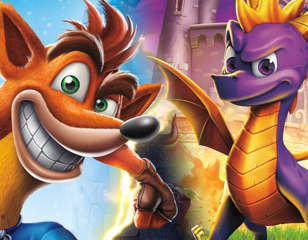Why are PS1 graphics in horror games so scary?
The classic aesthetic of PS1 games is making a horror comeback - so what makes it so frightening?

Joseph Kime
11th Apr 2023 15:50
Puppet Combo | itch.io - Fraser Brumley

It's late 2001, and you're invited by your classmate to come over to play a new game their mum just bought them for their PlayStation, blissfully unaware of what she'd just put into her child's hands. You arrive in their bedroom, you pull the blinds shut and switch off the lights, and you boot up Silent Hill 2.
You play it until your eyes hurt, and it's just as well because it's not like you wanted to sleep anyway. You've just had the most pant-s**ttingly petrifying experience of your life, and it was pumped into your brain in the form of crunchy polygons and crispy audio bites that don't plan to shift from your mind any time soon.
It's this exact scenario played out all across the world that kick-started a fascination with horror for many, and it has become the benchmark for their scares. It's these people now developing their own games, and while the industry has moved on to find new ways to horrify, for many, it's the old ways that are the best.
And it's hard to criticise this approach, because it's paying off, as we're seeing demakes of horror games and all-new titles inspired by the days of horror's past with a blistering, visceral effect. There's something about these graphics that is utterly horrifying - and it's not all to do with nostalgia.
The PSX inspires fear with the unknown

While the core experience harkens back to "the glory days," with Silent Hill 2 and Resident Evil serving as the first exposures to sheer terror for some, it's not just a desire to return to the classics that makes the crispy visual approach scary.
Old technology is unreliable at the best of times, even at its conception - it's why a flickering flashlight in The Last of Us or a draining camera battery in Outlast inspires such a lurching shock. In gameplay, it's pretty horrifying, but it works in concept, too - the limited polygon count and scratchy audio leave more to be desired, and it's this desire that sparks the realisation that you're not being given everything you need to feel safe.
Low draw distances increase the chances that something could be lurking in the dark ahead of you, and a lack of clarity means that the metal scraping sound you heard could be interlaced with human screams, and you could be none the wiser.
It's also a lack of model clarity that offers the realisation that any humanoid figure from afar could be a twisted beast up close, implying to the player that truly nothing is to be trusted. Technical limitations have, upon reflection, proven that isolating a player is perhaps the scariest thing of all, forcing them to be suspicious of anything and everything.
Horror Games harnessed their limitations perfectly

Silent Hill seems to be the best example of these horrors, with the game explaining away its limited draw distance with a mystifying fog that has descended on its titular town. Not only is the game's atmosphere amplified by the impenetrable unknown, but it's also moulded and defined by it, forcing the player into claustrophobic and nauseating paths that skate them ever closer to the edge of their seat.
It's the low-poly vagueness of gore and viscera, too, that forces the player to imagine just how chunky that puddle of goo could be. It's all in what isn't given to the player, rather than what is.
It's what has spurred a return to modern games with these applications in mind, with B0tster's iconic Bloodborne PSX, and a new remix of Dead Space from Fraser Brumley being arguably scarier than their existing counterparts, shrinking fields of vision and obscuring details with a pointier, crunchier aesthetic. The norms of video game development back in the early 00's have now become an abstract development choice that not only lends itself to limited development crews, but to the mystifying eeriness of the horror genre.
PS1 graphics are horrible in more ways than one

Say what you will about where horror games "peaked," but we can say for certain where it started - and its DNA still exists in horror today. Archaic technology has always had its place in horror, and its literal application in the form it took once upon a time during the reigning days of the PS1 has manifested once again in a trend that has birthed the sheer terror found in the likes of Nun Massacre and Bloodborne PSX.
We know what we like when it comes to throwbacks, but there's enough sheer nightmare fuel in the fact that visuals are so limited that the style has permeated beyond the limitations that created it. Now we just need to get over it in time to finish Dead Space Demake without having to pause it every 20 seconds.

About The Author
Joseph Kime
Joseph Kime is the Senior Trending News Journalist for GGRecon from Devon, UK. Before graduating from MarJon University with a degree in Journalism, he started writing music reviews for his own website before writing for the likes of FANDOM, Zavvi and The Digital Fix. He is host of the Big Screen Book Club podcast, and author of Building A Universe, a book that chronicles the history of superhero movies. His favourite games include DOOM (2016), Celeste and Pokemon Emerald.



























